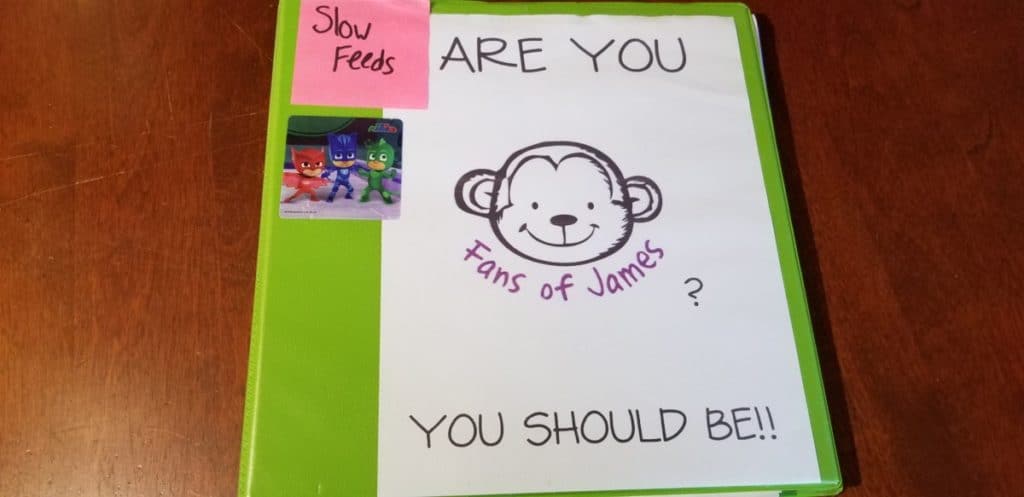
When you have a “normal” kid, you keep track of the usual things: height, weight, and vaccinations. Pretty easy, right? Things are a bit more complicated when you have a child with disabilities or medical issues. When James was in the NICU, Stacy started jotting down notes in a notebook. These notes included doctor’s and nurse’s names; any tests or scans that were done; any tests or scans that were requested, but not yet performed; surgeries; any thoughts or questions we wanted to discuss with a doctor or nurse; etc. Anything pertaining to James’ medical care was noted in the notebook. These notes were eventually typed up into a Word document and became the start of what is now James’ medical binder. We refer to it as the “James Bible”. It includes all of James’ medical info and it’s one of the main things we grab when we go to the hospital, either for a scheduled surgery or procedure, or if we have to rush him to the Emergency Room. I encourage anyone who has a medically compromised child to start a binder of their own. Depending on how medically challenged your child is, there might be a lot of things to remember, and you can’t remember everything. It will become an invaluable reference. This is how we have put together James’ binder. You might opt to do it differently, but this will hopefully give you an outline of what should be included.
Doctors and Medications
A list of James’ doctors (with their phone numbers) and current medications is the first thing you see when you open the binder. This is extremely handy when he goes to a doctor or to the Emergency Room. They always ask about any medications he is on. We just pull out the sheet for them to look at or make a copy of. Note the date at the bottom of the sheet. This is important because medications and dosages are can change from time to time. You want to give medical staff the most recent list of medications.
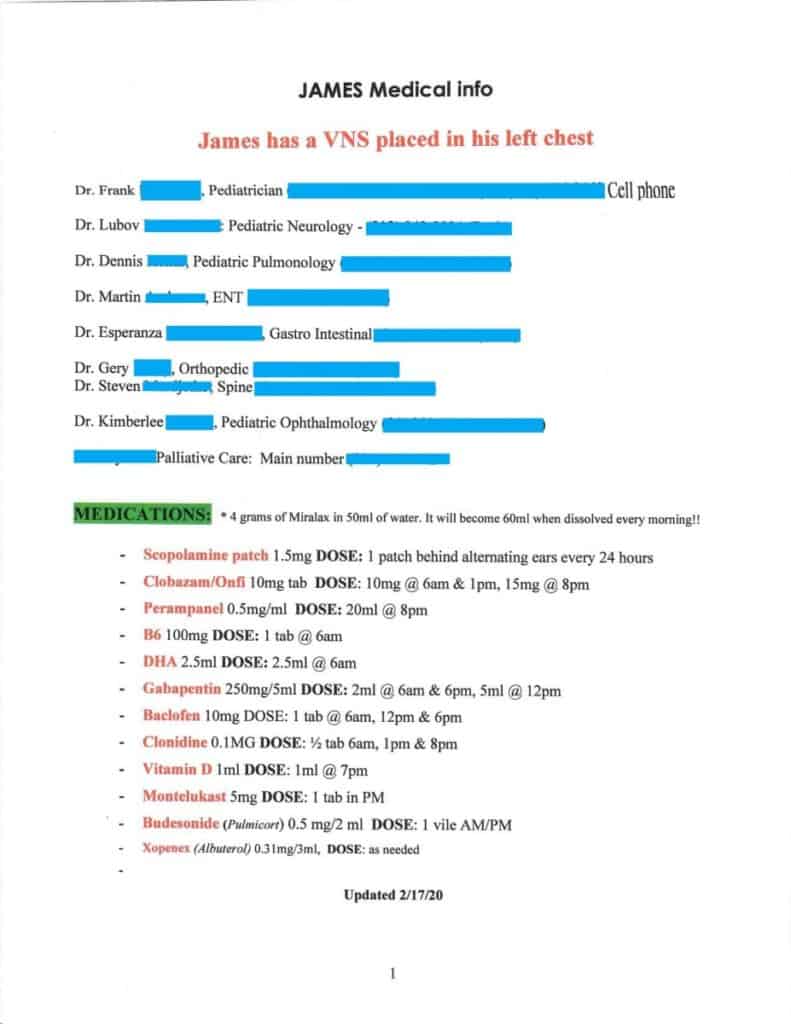
Emergency Contacts
Behind the list of doctors and medications is a list of emergency contacts. This includes our home, cell, and work numbers as well as phone numbers for immediate family and their relation to James.
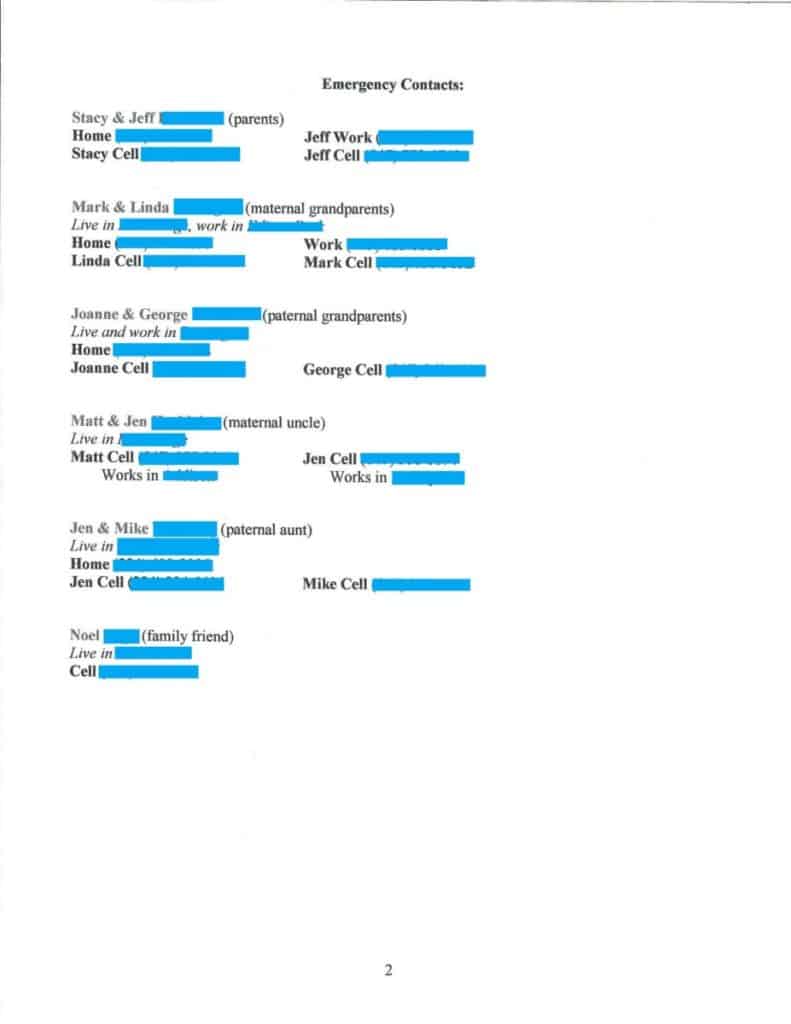
Diagnoses and Surgeries
Next up we have the list of diagnoses (DX) and surgeries. Next to the surgeries we have the month and year the surgery was performed.
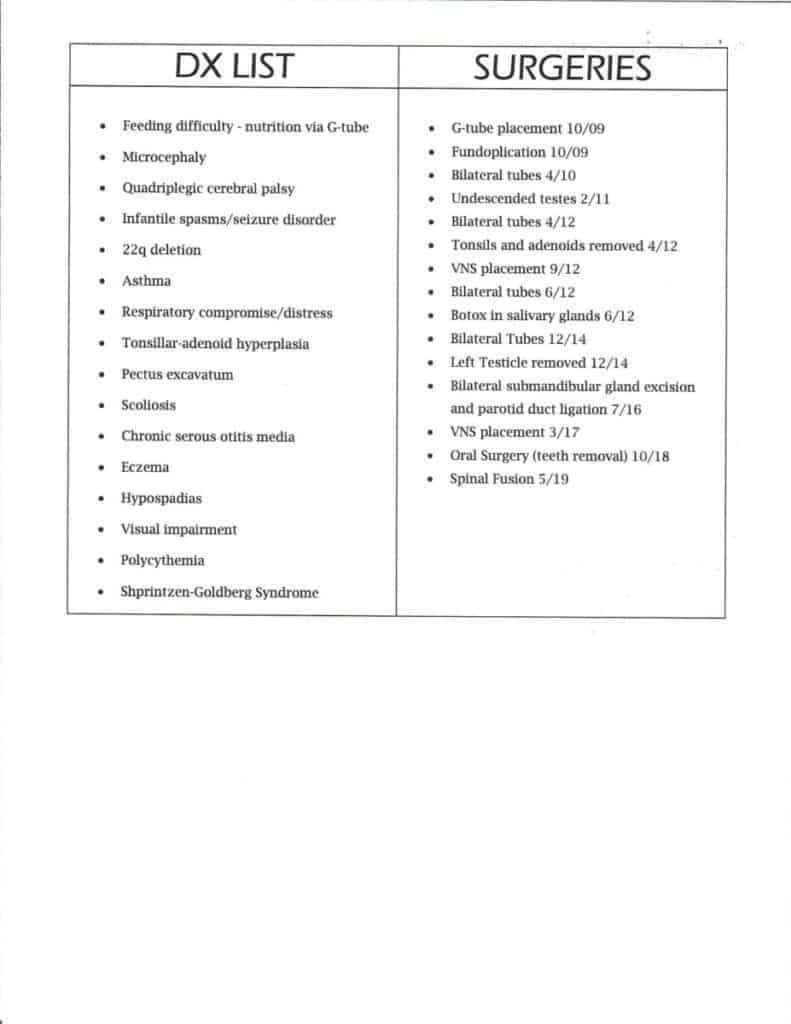
Oxygen Chart
Because James has occasional respiratory distress due to his inability to clear his own secretions, we have oxygen tanks in the house so included in his binder is a “Guide for Estimating Minutes of Available Oxygen” chart. There are many different sizes of oxygen tanks and each size will have a different chart. At one point we had both E cylinders and D cylinders, so I found charts online for each of those sizes, and copied them onto a Word document so that we could have one page that had both charts. The E cylinders are big and not very portable. Now that we have an oxygen concentrator at home, we rarely use them. The D cylinder is smaller and much easier to travel with. James has one on his wheelchair, so it is with him at all times. Although the 2 charts below are laid out a little differently, they tell the same information. The two numbers you need to be concerned with are the pressure (PSI) and the liters per minute. The pressure you will find on the gauge attached to the tank. This is how much oxygen is left in the tank. The less oxygen there is in the tank, the lower the pressure will be. The liters per minute is on the regulator that you can adjust. Once you know those two numbers, you can look at the appropriate chart for the oxygen tank you have and get an estimate of how long you have before the tank is empty. If you have any questions regarding any oxygen tanks you may have, please contact your home health provider.
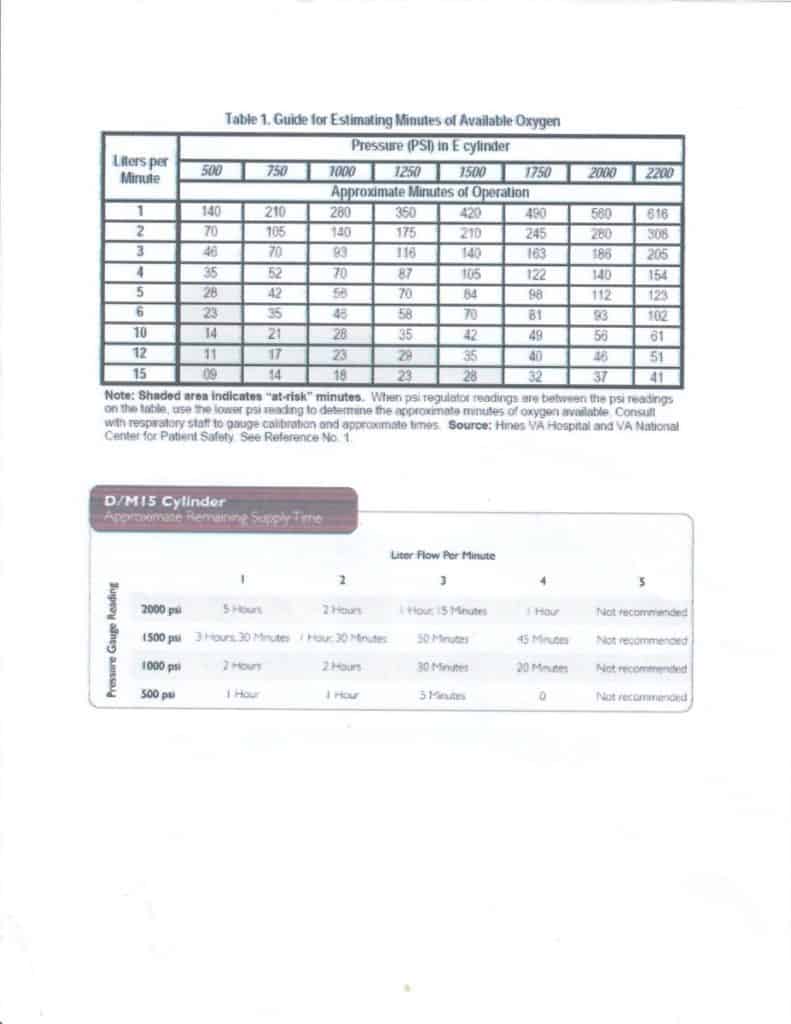
Blank Notebook Paper
Also included in the binder are blank pieces of notebook paper. These are for jotting down quick notes when you are talking to a doctor or nurse. These also come in handy if you have a question you want to ask a doctor or nurse next time they come into your hospital room.
When you have some free time, I recommend that you take your notes and type them up into a Word document. This not only makes it easier for others to read, but it also makes it easier to find something specific. Instead of skimming through a bunch of handwritten notes, you can just open the Word document and use the search feature. Here is an example of some of our notes from James’ first couple of days in the NICU:

Other Things Included in the Binder
Also included in our binder are:
- Any of James’ charts or notes that we may have received from a doctor
- Doctor’s business cards
- Extra pens and pencils
Summary
So that’s James’ “Bible” in a nut shell. If you’re child is as complicated as James is, I highly recommend you put together a binder like this. It is an invaluable tool. Stacy takes James to most of his appointments and stays at the hospital with him whenever he is admitted. I try to be involved as much as I can with his medical care, but if it wasn’t for his medical binder, I would be lost. Besides, I sometimes can’t remember what day it is, let alone when James had X surgery or what his dose of Y medicine is.
